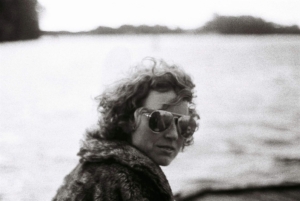Emotional Permaculture is a lens through which to view the world, a perspective of ecological relation extending from the self into the surrounding world. This means finding coherence and resonance between word and deed, thought and action, cause and effect. Harmonic relations between self and other is the core of Emotional Permaculture, because a lack of stress in relational exchanges produces a subsequent excess of energy, an energetic ‘product,’ so to speak, which can be reinvested into the relational matrix.
Life is shared – this is our foundation. To be, is to be with, always and already. Changing the tone of exchange we have with the world has profound consequence. To see that we are able to thrive through and with the thriving of others removes the obstacle of competition and its subsequent barrier to connection. For when one is connected to the surrounding beings breathing all around them, it is difficult to place personal needs over the goals of the collective. One is nested within the other, inherently.
Unwinding the core tensions of relation often involves delving into realms of reflection – becoming aware of conditioned triggers and psychological or somatic narratives embedded within the tissue of our mind, body, and heart. Relation cannot be an act of perfection, but it can be real, rooted in kindness, compassion, joy and equanimity.
Living, loving, creating, and letting go.
What is an emotion?
“It is a transformation of the world.” – Jean-Paul Sartre
What is permaculture?
“Permanent-culture” – in other words, sustainable creation. Creation is a process that implies the use of resources in order to cultivate something new – inherently within creation, therefore, is a process of consumption, of composting, so to speak. Originating in the 1970s with Australian ecologists Bill Mollison and David Holmgren, Permaculture proper is understood as a design system based on the cultivation and maintenance of mutually beneficial relationships whose goal as a system is to produce, rather than consume, our net life force.
What is emotional permaculture?
Emotional Permaculture is a lens through which one can view the world. In the same way we change the lens on our camera to obtain a different perspective, Emotional Permaculture shifts the way we perceive our relational ecology. It sees all our interactions as imbedded within a shared world. In this world, there is no hierarchy; no relation is more important than any other. As Oscar Wilde says, “In life there is really no small or great thing. All things are of equal value and of equal size.”
Emotional Permaculture is also a meditation. We can only know the world around us to the depth that we know ourselves. The purpose of Emotional Permaculture is to allow us to recognize our goals – literally, what we want in this life; our needs – what we use and consume; and our actions – what we contribute, all within the shifting resource base of the physical and energetic world that surrounds us.
All relation involves sharing space and communication. Therefore, Emotional Permaculture looks at language, architecture, and the tone of how we occupy space and express ourselves. We are plants that can move; we are animals that can speak; these are our blessings and our burdens.
Above all, the meditation of Emotional Permaculture is a process. We have our emotional ecology, our garden, so to speak, of which we are the stewards, but the emphasis here is that there is no true ownership of anyone or anything. A sense of stewardship means being a caregiver – it also means being a host. Whether you see yourself as a nomad or a homemaker, it is important to recognize that one cannot exist without the other. We are always making home, and yet our home base is always shifting. We cannot choose our neighbors or external circumstances, but we can choose to have an impact. We can choose to live a compassionate life.
There are boundaries surrounding any garden because there are certain limits to what we are able to maintain. Figuring out the capacity of your system is an important part of Emotional Permaculture, and this is an individual process. We are all one, and we are only one, says the physicist Nassim Haramein, but we also start with the one. Your infinity is first and foremost contained within the skin of your body. Emotional Permaculture recognizes our boundaries, and it simultaneously recognizes our infinity. By nature we are bounded infinities, and our challenge is to live without resistance, without turning to friction and conflict as a way to produce energy.
“In short, it’s time to put aside the traditional concepts of relationship and seriously consider the notion of cosmic spiritual partnerships that transcend those of the past.” – Anonymous
Every encounter is a gift. May we recognize it and always walk in beauty.
rsvp: vidabierta

Elisabeth Howland is an American writer who has been relating in the Emotional Permaculture landscape since 2006. This body of ideas took her through a decade of work in philosophy before landing in the realm of meditation, and has continued to develop and grow in accordance with the experiences of personal relationships and community necessity.
RSVP:
vidabierta
5580 La Jolla Blvd #143
La Jolla, CA 92037
USA
emotionalpermaculture@gmail.com

